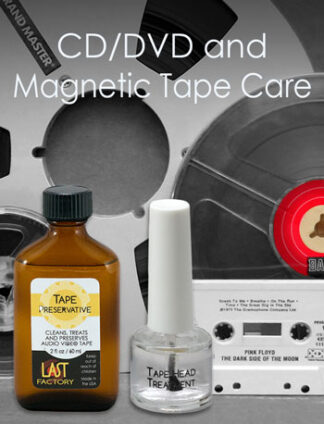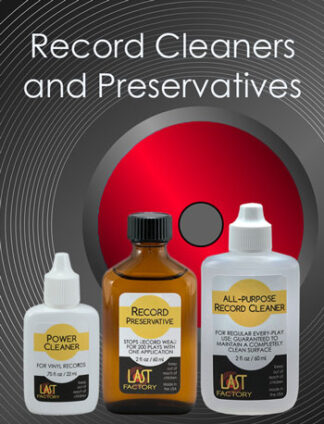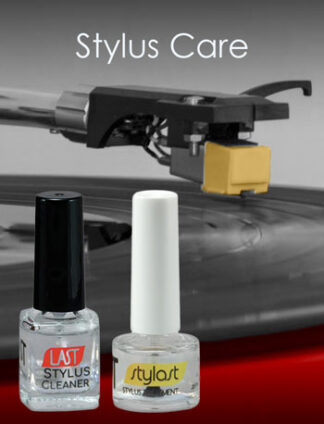[Editing note: This is a long set of posts, the executive summary is that humidity degrades tapes. We recommend a vacuum approach for dehydration, but you can also use a simpler, though slower, technique using desiccants. We don’t recommend baking. It does work, but we don’t like the risk of a damage-causing mistakes. Once the tape is dehydrated, treatment with our Tape Preservative prevents re-absorption of moisture. Note – the dehydration process can actually restore some of the tape binder integrity , not just stop degradation. So if you are going to dehydrate your tapes, we advise doing that, then treating with Tape Preservative, before playing them. We will clean up this post to make it more concise, but until we get there, hopefully this helps!]
Thank you for that wonderfully uplifting phone call last week. For years I’ve agonized over whether to risk baking some of my precious mag tape recordings-and then to discard them after having no recourse but to digitize them as best I could. But your vacuum-assisted desiccating process and (proprietary) user-applied preservative promises to eliminate the need for both hazardous baking and consenting to the sonic compromises of A/D conversion.
I did see on the web your paper: “Preserving Magnetic Tape.” Broadcast Engineering (Oct. 1987): 84-88. though not the actual article. I did find a couple suppliers of desiccators and pumps:
SP Bel-Art Polycarbonate Vacuum Chamber and Plate; 0.2 cu. ft. (F42043-0000) (on Amazon)
Will either of these provide sufficient negative air pressure to remove enough moisture from at least one 7″ reel of tape? Please let me know.
In any case, I do have another important question:
All of the mag tape recordings I have are 1/4″ quarter track stereo. Thus, many of these 7″ reels have data on both sides.
So I would need to at least preview both sides of each tape before deciding on which segment(s) of the tape to keep and then cut out and splice onto a separate take up reel. Then when that tape up reel (s) is about half way full of tape I want to keep, would re-desiccation be necessary before the tape begins to absorb moisture and then treat it with LAST preservative? Obviously, it would be hardly cost-effective to treat a whole reel of tape with expensive LAST preservative only to later keep 400 feet or so of the tape and discard the rest.
Therefore, after desiccating just one reel of tape in the chamber, what would be your conservative estimate as to how long I would have for previewing and “fast”(X) winding both sides of the 7” reel, make two or three quick cut and splices of the tape that I want to keep from it onto another reel-before that first reel regained too much moisture and needed to be desiccated for me to be able to then safely continue editing?
X: If need be, in order to minimize risk of tape oxide shed while previewing the tape, prior to applying LAST preservative to that part of the tape I want to salvage, I could use my ATR-102’s 60 or 180 ips spooling modes, rather than fast wind.
Thank you. G.B.
I examined the products that you kindly provided. Each would provide sufficient desiccation to achieve dry and moisture-free media. The major differences between the “Auto Vacuum Desiccators” and a Vacuum Chamber/Vacuum Pump system has to do with the degree or removal of air pressure from within the cavity. With a normal atmospheric pressure of 15 lbs per square inch (which equals 760 torr), the self contained Auto Vac Desiccators achieve a sustained vacuum of 667 torr. Almost all of the less expensive stand alone vacuum pumps achieve a pressure of approx. 1 to 7 torr. (from 100x to almost 700 x greater vacuum. The difference will be found in the amount of time required to remove a maximum amount of moisture. And that, is key to the successful restoration and preservation of magnetic media, because it is the moisture that ultimately causes the breakdown of the polyester matrix binding agent.
If I load my chamber completely full of 10.5″ reels of tape (22 tapes) it can take up to 2 weeks for complete desiccation. The pump in use here is a Duo-Seal High Vacuum pump that achieves less than .01 torr. Admittedly, 22 reels of tape 10.5 inches in diameter is a VERY large amount of surface area to desiccate. But depending on the moisture load, even a few (5 – 6) 7″ reels will take 2 – 3 days before reaching an end point in our system.
Regarding your question of the possible need to re-desiccate after selection and transfer to an empty reel prior to treatment with tape preservative. The amount of time and the relative humidity that the tape is exposed to determines whether re-pumping is needed. A user in New Jersey resolved exactly the same issue, in the following way. After initial desiccation, while working and editing his recordings, he keeps his tapes in metal (could use plastic) ammo boxes with a layer of Silica Gel Desiccant in the bottom of the box underneath some window screen. After editing and post work is complete, then the tapes are treated with the Tape Preservative. In the absence of separate storage facilities such as that mentioned here, working tapes could be placed in plastic boxes and sealed with packaging tape. Even if a long time is involved at relatively high humidity, if it were necessary to re-pump the tapes, it would not take very long to achieve equilibrium.
Best regards, Walter
Mr. Davies, in marketing your tape preservative at your website, you really ought to post there a downloadable PDF detailing your techniques for tape desiccation. As you indicated to me last year,this must be done prior to using this costly preservative. Otherwise, how else can the tape absorb and retain the preservative chemicals?
Best Regards, G.B.
Thank you for your comprehensive letter. I trust this response will help and answer some of your questions and concerns.
First, I want to assure you that you will have plenty of time to analyze, prepare, and process your tape(s), without harmful re-introduction of atmospheric moisture. Both the intake and extraction of moisture from magnetic media is a process of diffusion. Untreated media will absorb moisture for 30 or more years before about 20% of the polyester matrix becomes compromised to the point of failure. During vacuum extraction, moisture is removed initially from the edge of the tape pack. Moisture will then attempt to”equilibrate” by diffusing toward the edge. As moisture is removed from the edge – moisture diffuses from the inner body of the media toward the edge. This entire process is a function of storage conditions and ambient relative humidity. Magnetic media in the dry air of the American southwest has a MTF (mean time to failure) much longer that that on the county’s humid east coast. Tape stored in an area with relatively cool, constant temperature has a vastly greater MTF than tape that has been stored in an attic or upper level of a garage where temperatures can go through great (and sudden) changes.
Every grocery store and super-market has a section of food storage products. Any moisture resistant storage box that is slightly larger than several reels of tape, make a perfect inexpensive, intermediate storage for tapes of interest.
Once a tape has been desiccated, it could be placed in one of these storage boxes for however long it would take to edit and then cut/splice before the final product is ready for preservation treatment. If that process can be considered on-going and lasting over a period of months, the following may be of special interest. One of our customers in New Jersey, has adopted the following regimen. First of all, all of his tape (7 inch reels) is kept in surplus Army Ammo boxes that employ a hermetic seal around the box cover. Tapes that are being actively used or edited, are kept in the type of food storage box previously mentioned. In the bottom of the food boxes, he places a thin layer of dry silica gel which is then covered with a thin cloth or piece of mesh screening. No matter how long a project takes – or should there be interruptions – the tape remains functionally dry until he is ready to begin treatment, which seals the media against moisture incursion. I want to emphasize that: 1. You have a reasonable amount of time to prepare and process desiccated tape prior to treatment. And, 2.There are storage options other than the manufacturer’s card-board or plastic boxes, that can be especially helpful for someone who want to preserve and protect their magnetic library. Also, it is not necessary to rush (or use your ATR’s high spooling speeds) to complete the process. An aside, Silica Gel is available in virtually anyplace that offers laboratory or scientific equipment or supplies.
Any vacuum pump or fore-pump that can get down to less than a millimeter of Mercury, will adequately exhaust and dry magnetic media.
Best regards, Walter @ LAST





